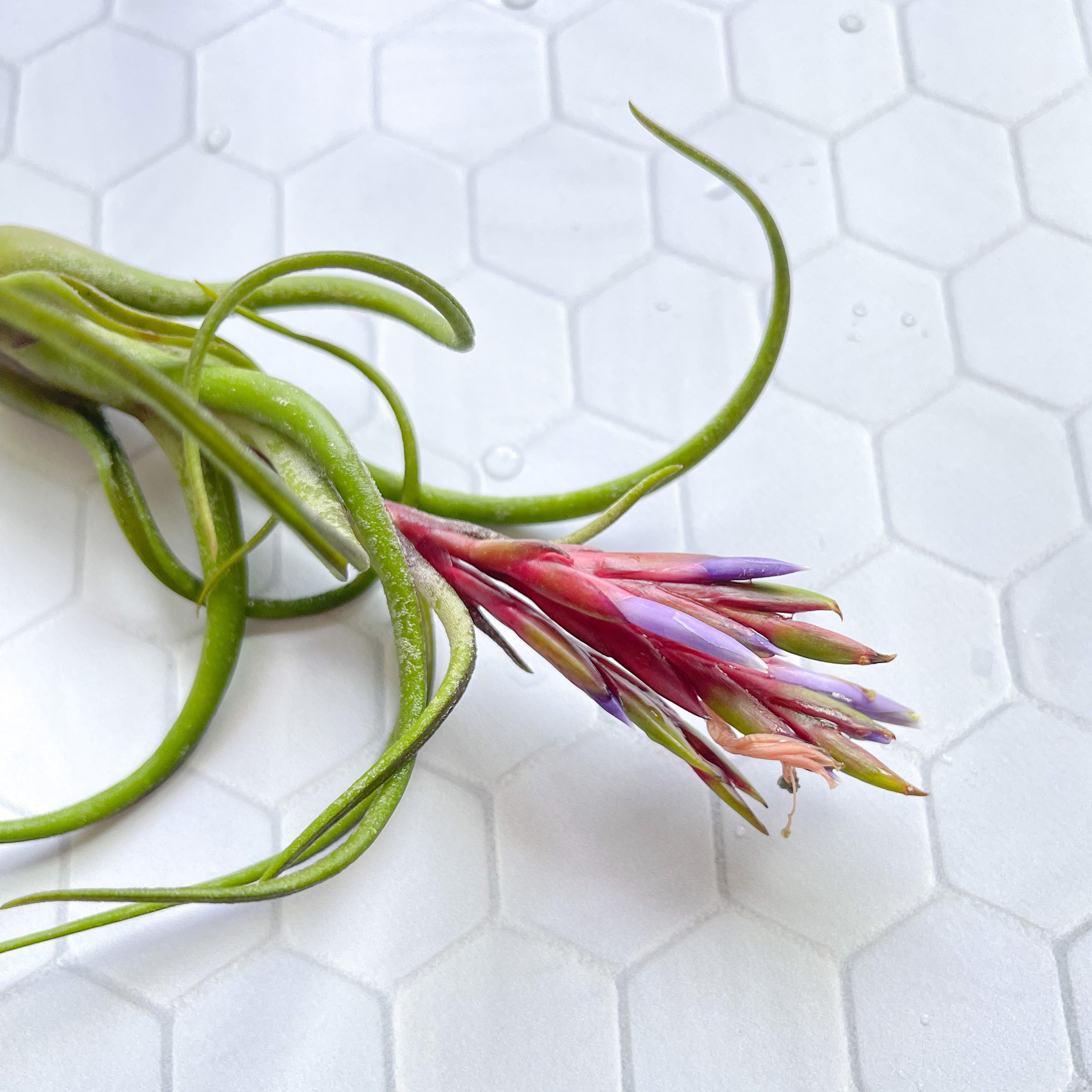Whether you have been meticulously caring for your air plant all year or you just had a lucky surprise in your new shipment, a blooming air plant is exciting and highly sought after amongst Tillandsia (air plant) lovers. But now what? Is this beautiful bloom doomed to shortly be a dead air plant? We are often asked this and, to much relief, the answer is no! While the plants’ blooming cycle is typically at the peak of their maturity, it is also the beginning of their reproductive cycle in which offspring, also known as “pups”, are formed – read our blog all about Tillandsia life cycle. This means the plants will naturally start fading after they have produced pups that are mature enough to survive on their own and not when the blooms have passed. Let’s take a closer look at the anatomy of air plant blooms and how to properly care for a plant post-bloom to fully grasp this cycle.
Inflorescence

You may notice there are a few different structures that make up the inflorescence, or the branching reproductive portion, of the air plants. The most visible parts are the stalk or stem, the bract from which the flowers emerge, and the flowers themselves. Air plants will boast both colorful bracts and flowers ranging in colors from purple to orange to bright pink. The duration of blooming flowers will vary among species and can last anywhere from a few days to several weeks. The bracts of the air plants tend to last longer than the flowers and their attractive coloration can often last for several months after the spent bloom has passed. Larger species of Tillandsia, such as the Xerographica, tend to have longer bloom cycles, some over a year!
Post-Bloom Care

Once your bloom has passed, you can either leave the dried flowers and bract intact to observe the plant’s natural cycle or you can simply remove the flowers and trim the bract towards the base. Trimming the inflorescence will not harm the plant and will help to encourage pup growth. The timing of pup growth is dependent on the plant’s care and environment. The process is slow so don’t be discouraged if the offspring don’t appear immediately after the bloom has passed. Be sure to provide adequate water and sunlight for the plant and if you have air plant fertilizer, now is a great time to use it! Once the pup or pups have started to grow and mature, the mother plant will normally start to fade and eventually die off. The pups can be removed once they are about 1/3 to 1/2 the size of the mother plant to live on their own and eventually start to mature and bloom themselves. For further details on pup removal, check out our "Easy Propagation of Air Plants" blog. Some species of air plants such as the Ionantha family, are prolific pup producers and will eventually grow as a clump of several plants if left to reproduce naturally.
If you have a Tillandsia that has yet to bloom, our “How to Encourage Your Air Plant to Bloom” blog discusses tips for achieving this beautiful and exciting cycle.
Follow us on Instagram and Facebook for further care tips and fun air plant news!


Leave a comment